CMN 373
Fashion and Communication

1. Course Description
This course examines contemporary issues in communicating fashion, placing recent trends in fashion and retail communication in a historical context and drawing from fashion theory to explore how media formats starting from print have communicated fashion aesthetics and promoted products and lifestyles to consumers. Students will also take a critical and intersectional approach to thinking through how fashion and dress function as embodied forms of communication of personal, cultural and subcultural identities.
Last Revised
Delivery
Lab: 3 hours
2. Course Objectives & Learning Outcomes
- To develop sensitivity to language and tone; to learn to organize and convey ideas and information textually, visually, and orally
- To analyze audience, situation, and medium to create messages that respond to practical challenges
- To write and speak ethically and effectively in a variety of internal and external organizational genres
3. Topics Covered
- Professional communication theory and practice
- Audience analysis
- Visual design
- Job search communication
- Professional presentations
- Routine communication
- Negative messages
- Persuasive communication
- Media relations
4. Teaching Method
Workshops
In this workshop course, students have the opportunity to prepare assignments in class with the guidance and supervision of the instructor.
Evaluation Methods
Students will complete a minimum of four assignments, including correspondence and at least one report. At least one assignment will be timed in class. Related in-class work may also be assigned. The weighting of each assignment will be announced by the instructor.
Context
CMN 373 will be presented in the context of communications in the fashion industry. Topics discussed and assignments given will take into account students’ program and other professional interests.
5. Course Materials
Meyer, C. (2017). Communicating for Results: A Canadian Student’s Guide. Fourth Edition. Toronto: Oxford University Press. ISBN 9780199023042. E-book version available here from RedShelf, ISBN 9780199023059.
6. Policy
6.1 University Policies
Students are required to adhere to all applicable university policies found in their Online course shell in D2L and the Course Outline Policies.
6.2 Print and Digital Copying Guidelines:
Toronto Metropolitan University complies with Canada’s Copyright Act which protects both creators/owners and users of copyrighted materials. Students should familiarize themselves with TMU Copyright policies and procedures, and contact the Copyright and Scholarly Engagement Librarian at copyrt@torontomu.ca for questions, concerns and clarification of the copyright rules.
6.3 Turnitin.com
Turnitin.com is a plagiarism prevention and detection service to which Toronto Metropolitan University subscribes. It is a tool that helps instructors determine the similarity between student work and the work of other students who have submitted papers to the site (at any university), Internet sources, and a wide range of books, journals, and other publications. While it does not contain all possible sources, it gives instructors some assurance that students’ work is their own. No decisions are made by the service; it generates an “originality report,” which instructors must evaluate to judge whether something is plagiarized.
Students agree by taking this course that their written work will be subject to submission for textual similarity review to Turnitin.com. All submitted papers will be included as source documents in the Turnitin.com reference database solely for the purpose of comparing the similarity of such papers. Use of the Turnitin.com service is subject to the terms-of-use agreement posted on the Turnitin.com website. Students who do not want their work submitted to this plagiarism detection service must, by the end of the second week of class, consult with their instructor to make alternative arrangements. Even when an instructor has not indicated that a plagiarism detection service will be used, or when a student has opted out of the plagiarism detection service, if the instructor has reason to suspect that an individual piece of work has been plagiarized, the instructor is permitted to submit that work in a non-identifying way to any plagiarism detection service.
6.4 Email Communication
Toronto Metropolitan University requires that any official or formal email communication from students be sent from their official Toronto Metropolitan University electronic accounts.
6.5 Video and Audio Recording
No video or audio recording is permitted in class without the express permission of the instructor.
7. Learning Management System
Toronto Metropolitan University supports Brightspace by D2L as its official Learning Management System. University Policies governing Brightspace have been documented at the Courses @ Toronto Metropolitan University Privacy and Security website.

